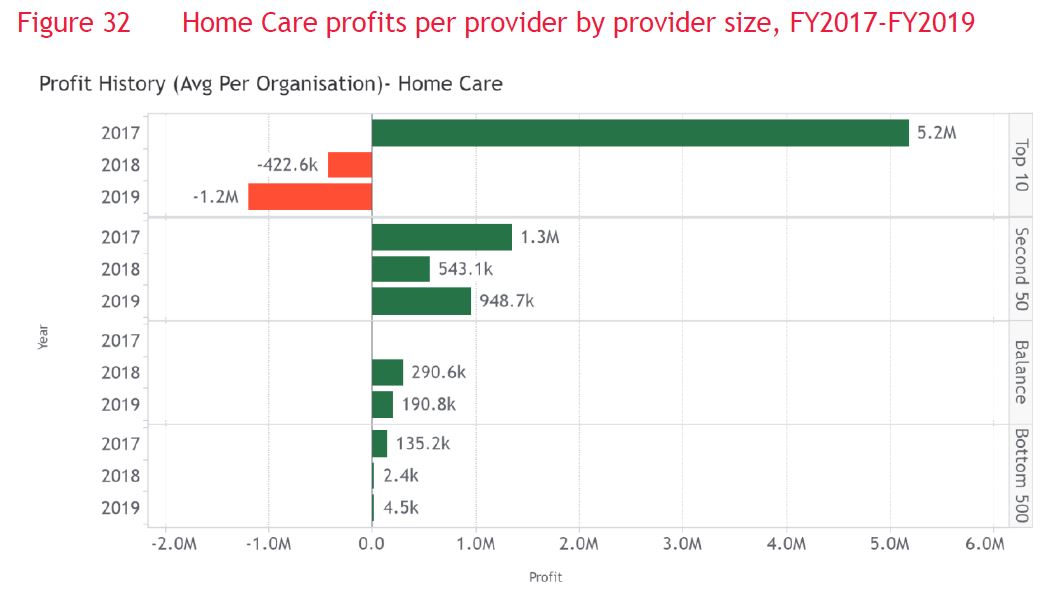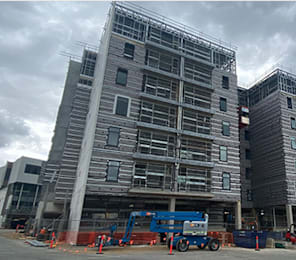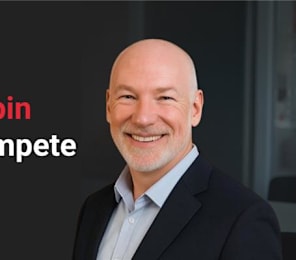Just a day after a separate report pointed to a 1% increase in income tax as the ‘fix’ for the sector’s funding woes, the Royal Commission has released another research paper by global professional services firm BDO that calls out the lack of transparency on providers’ spending of Government and user funds.
The lengthy 146-page paper – ‘Report on the profitability and viability of the Australian aged care industry’ – uses unpublished data supplied by residential care and home care providers to the Federal Department of Health to assess providers’ profitability and viability.
Viability unable to be determined for 39% of providers
Using a framework which took into account providers’ accounting profit, cash flows and various other measures of a provider’s ability to access capital, BDO found that for 2017-18 (the latest year that data was available for all providers because some providers have a 31 December reporting date so the information for 2018-19 was incomplete):
- 74% of aged care providers were profitable, 13% were unprofitable, 4% were unprofitable but had positive cash flows, and 9% were profitable but had negative cash flows.
- 53% of aged care providers were ‘viable’, 8% were ‘not viable’, and for 39% viability could not be determined because it was dependent on them being able to secure additional capital.
- The total assets for FY2018 were $73.4 billion, total liabilities were $50.5 billion, and equity was $22.8 billion. Not For Profits make up a majority of these figures – they owned 69.5% of the assets, 61% of the liabilities, and 89% of the equity.
- Non-aged care activities accounted for around 36.3% of Approved Provider assets, 29.0% of liabilities, and 52.8% of equity.
- RADs account for $28.4 billion or 55% of total Approved Provider liabilities and were higher in the For Profits, making up $13.7 billion or 67% of their liabilities.
10 largest home care providers operating at a loss
Recognising that these results may be significantly different now because of the current economic climate, the report also finds that while there is limited data on home care providers’ finances, what is available is bleak.

The sector has grown 16.1% per annum since FY2014, but expenses have increased by 17.8% per annum.
The introduction of Consumer-Directed Care in February 2017 has also seen a major decline in profits for those operators where data was available, with the profit margin decreasing from 10.7% in FY2017 to 3.7% in FY2019 and the 10 largest providers operating at a loss in FY2018 and FY2019.
Royal Commission looking for links between ownership and quality of care
Interestingly, the report notes that the Royal Commission requested BDO investigate the link between providers’ finances and care indicators – suggesting the Commission is continuing to look closely at the relationship between ownership and quality of care.
Also, tellingly, the firm only found only a “weak” connection between income and care expenses and care indicators.
“Overall, our investigation found significant variance in the indicators between providers, but few and weak correlations between the care indicators and financial metrics,” the report states.
“When comparing financials to the relative care indicator, we found only weak statistical associations. We found a weak relationship with income which is driven by the component of Government funding that includes a higher payment for people who have higher care needs.”
Sector’s finances “unclear” because of limited reporting obligations
BDO says that the aged care industry’s overall financial performance is unclear because of what they consider to be:
- limited reporting obligations;
- providers’ use of group entity structures (which BDO says is a “perfectly reasonable” practice);
- transactions between related entities; and
- the delivery of non-aged care activities by some providers.
Noting that these reporting obligations are set down by the Department of Health, BDO concludes that there are major differences in the way in which providers structure their operations and the costs they incur such as interest, management fees and rent with expense items ranging from 0% to 100% of their total expenses.
BDO recommendations to Royal Commission
BDO sums up that it is “perfectly reasonable” to allow providers to use group structures, but points of a lack of governance and transparency increases the risk of recovering loans and understanding returns.
However, they urge caution in implementing any new policies – because it could scare off current and future investors.
“It is likely that any new policies would have significant implications on the return on investment for investors and is likely to have a significant impact on the sector as a whole,” they write. “There is insufficient data to determine this impact at this stage.”
Despite the danger, BDO recommends that greater transparency into returns and losses, profitability and viability, finical support received by operators, expenses and other non-aged care related activities could have a positive impact on policy making and investment decisions.
Room for home care providers to provide more data
The firm also says there is room for requiring all approved home care providers to provide more data on their financial activities.
“Given the significant effort required to analyse the data for this Report, the ability to readily produce a reliable, consistent set of data as the ‘source of truth’ is likely to increase the efficiency of any future analysis and reduce risk,” they conclude.
Lack of data has been a running theme throughout the Royal Commission, with the Commissioners critical of the Federal Government’s failure to harness data in its decision-making for the sector.
It seems likely then that the Commissioners will take up these recommendations into consideration for their Final Report.
You can download the paper here.
The Royal Commission will be examining the funding, financing and prudential regulation of aged care next week with seven days of hearings from 14-22 September.










